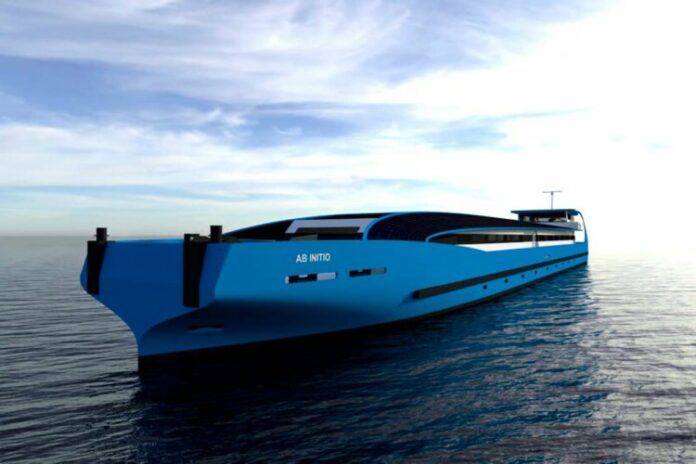The inland vessel will be equipped with a lithium-ion battery pack, a 50 kW fuel cell module running on hydrogen gas and eighty solar panels.
With full batteries (400 kWh) and hydrogen tanks (33 kg), the Ab Initio can sail without emissions for at least eight hours. Then the batteries and tanks have to be refilled or one of the GTL (gas-to-liquid) powered Stage V certified generators has to be started.
The decision to purchase a fuel cell module built by Zepp.solutions in Delft was only made during construction. The system was not in the original design and there was no money for it at the time.
STC project supervisor Nicole van Spronsen, who was succeeded by Marjolein Mahu at the end of March, says:
‘But we saw it as an important system for future inland navigation. Through subsidy applications and sponsorships, we managed to more than double the original construction budget of 3 million euros. Various maritime suppliers wanted to sponsor us and we were thus given an advantage in the choice of components.’
The sponsorship campaign also yielded interesting choices from an educational point of view.
Van Spronsen says:
‘For example, two companies offered an environmentally friendly ultrasonic antifouling system. One system now protects the bunker coolers and the other protects the surface. For suppliers, the installation of their products is interesting because future skippers get to know them during their training.’
There are also two generators from two different suppliers on board. In the stern, there is a 280-kW generator from Volvo-Penta and in the bow a 600 kW KEES Generator from Koedood. Alphatron supplies the navigation equipment, carpenter Hoogendoorn the lectern and EST-Floattech the batteries. Veth Propulsion supplied a 200-kW bow thruster with 360-degree rotating steering grid.
Machinefabriek De Waal from Werkendam signed for the oil-lubricated propeller shaft installation and installed two low-resistance Easy Flow rudders.
Owner Marco de Waal of Machinefabriek de Waal says:
‘Thrusters have been considered, but 95 per cent of inland navigation vessels have normal propellers with rudders. So it is better to use that on a training vessel as well.’
De Waal provides the bolt behind the propeller with a flow cap.
De Waal says:
‘This improves the flow and prevents the bolt from corroding. We are supplying the steering gear with an extra control panel. The student will soon be sitting in the middle of the lectern. To the right of that, carpenter Hoogendoorn is building an extra island for the instructor on which all the control levers for propulsion, steering and bow thruster are located as well. The instructor can therefore intervene instantly when necessary.’
A 600 kW directly reversing permanent magnet electric motor from Oswald drives the propeller of the electric boat.
Source: This article – by maritime journalist Hans Heynen – was published in SWZ|Maritime’s April 2022 inland navigation special. STC Group is a Dutch educational and knowledge institution for shipping, transport and port industry.



